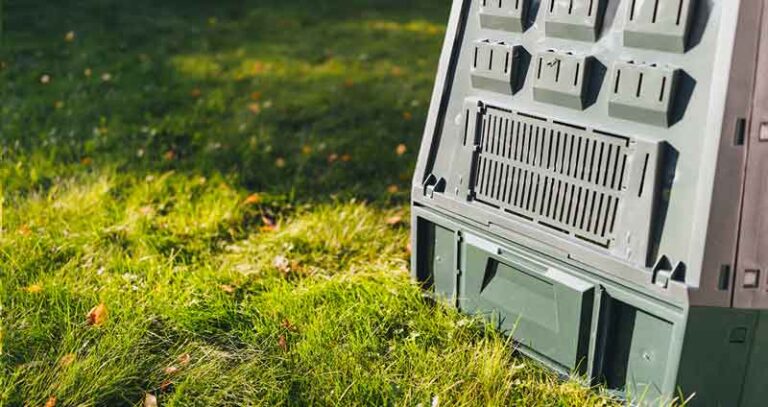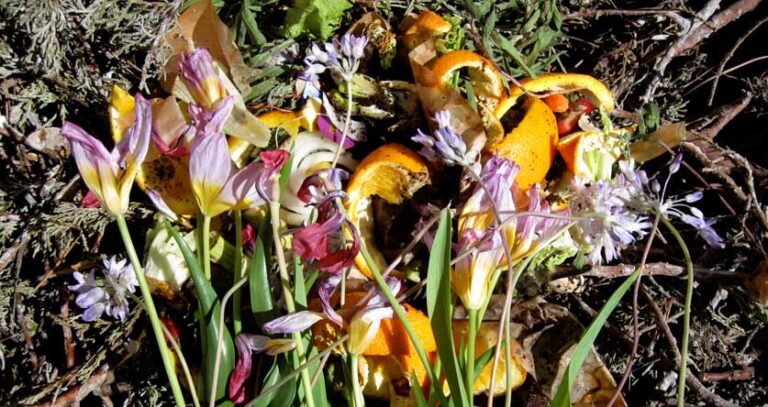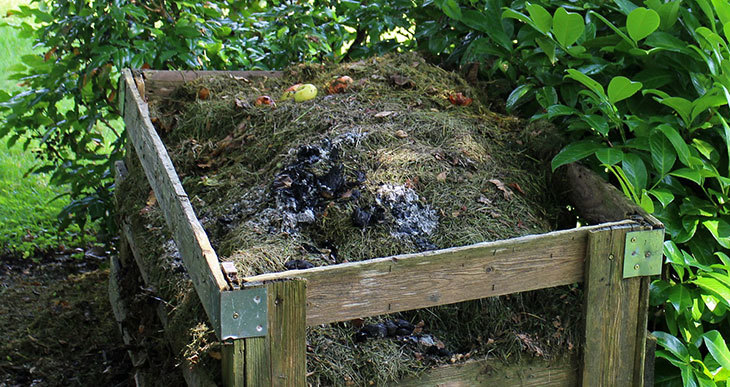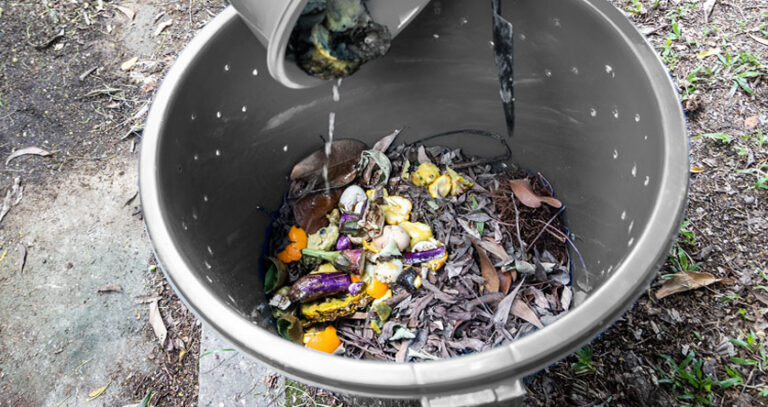Compost Pile Vs. Bin (Which One Works Best for You)
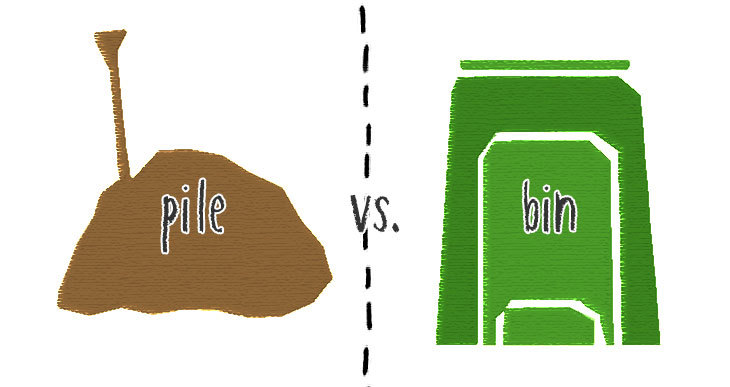
There are so many different methods for the modern gardener to compost that the choice can be a little overwhelming.
The traditional compost pile and the relatively recent compost bin are two common methods available to gardeners.
Each has it’s pros and cons, but which method will be best for building your compost reserves?
A compost pile or a bin?
Compost pile vs bin
Compost piles require more space than compost bins, but size can be adjusted according to needs. Compost bins are more visually appealing and attract fewer rodents and other pests. Hot compost piles are fast, but cold compost piles are slower than compost bins. Finally, bins are more expensive than piles.
If you have recently gained a personal interest in gardening, it is only a matter of time before you will become tempted to make your own compost at home.
Compost piles and compost bins are easy and affordable composting methods, each with its own benefits and drawbacks.
Compost Pile Or Bin What’s The Difference?
The main difference between a compost pile and a compost bin is that a compost pile is a loose conglomeration of decaying organic matter, often exposed to the elements. A compost bin uses an enclosed container to form the compost and contain the process in a smaller footprint.
To discuss the differences between a compost pile and a compost bin, it would serve to define each composting style to ensure we are all on the same page regarding these methods.
Both methods work well but are generally only suitable with some space available in your backyard.
Compost bins typically require less space than compost piles, but both methods will work well in most cases.
This generally makes the choice come down to space and personal preference.
What is a Compost Pile?
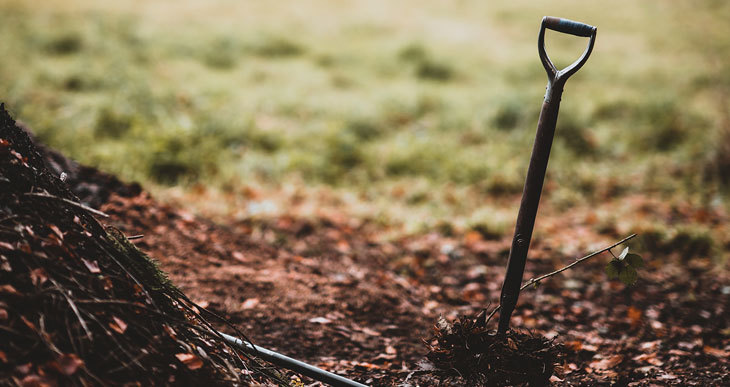
A compost pile is traditionally the method that gardeners have been using since time immemorial to produce nutrient-rich compost from their garden and kitchen waste. A compost pile is essentially a loosely defined pile of decaying organic matter that is heaped together in a location in your garden.
Some compost piles are confined by rudimentary structures to keep the compost localized and prevent wind, rain, and critters from dispersing the compost material.
Compost piles are generally more open to the environment than other composting methods, which has advantages and some negative aspects to the process. They can be more versatile in the material that can be composted but are generally more labor-intensive.
A compost pile must be turned periodically to ensure even composting of the material within the pile. Outer layers of the pile will not compost down if the material is not turned regularly, usually once a week.
Piles also need to be covered to protect them from excess moisture and retain the heat in the compost pile.
A simple waterproof garden tarp like this one (Amazon) does the job nicely!
But keep in mind this makes adding to the pile a little more cumbersome and time-consuming since the covering must be removed each time.
Compost piles can only be added to for a limited time, after which the pile should not receive any new material. This is so the composting process can be completed. (In general, at this stage, gardeners begin a new pile next to the old one).
Piles can vary in size, depending on the space you have available, making it one of the most adaptable compost methods.
Most gardeners who use compost piles will have multiple piles at various stages of decomposition. This will allow them to have compost nearing maturity while a second pile can receive new waste material from the garden or kitchen.
What is a Compost Bin?

A compost bin is a vertical container placed in the garden where organic kitchen and garden waste can be deposited. This material composts down inside the bin. Most bins have an open bottom that allows earthworms and other microbes access to the decaying matter, which assists in the decomposition.
The confines of the compost bin allow the compost to be contained in a smaller area, taking up less garden space than a traditional compost pile. The structure of the bin provides protection for the composting material from the elements and unwanted critters who may seek to make their home in the compost. (Or maybe have a quick feast on the food scraps)
The compost bin lid provides protection from excess rain entering the compost and makes it easy to deposit new material in the top. The lid and the structure of the container also help maintain high temperatures inside to aid in the decomposing process.
Some bins are even insulated to help keep the contents warm, even in colder climates. And because heat is an important factor they can speed up the composting process.
The Exaco Aerobin is a good example (Amazon).
Access to completed compost material is easier with a bin, usually via a hatch at the bottom that can be opened to gain access to the compost.
(For a detailed explanation about using compost bins, read this article).
Is a Compost Bin or Pile Better?
Compost piles and compost bins both work well and are acceptable methods for achieving the same goal. A better expression would be which method is best for you. Compost piles and bins both have advantages or disadvantages against the other.
To express their differences in order to decide which would be best for your composting needs, here’s a handy side-by-side display of the pros and cons to help you choose.
Note: If viewing on phone, please swipe the table to scroll horizontally.
|
– |
Compost Bin |
Compost Pile |
|---|---|---|
|
Space Required |
Small footprint. Great for gardens of any size. |
More space is generally needed for compost piles, even smaller piles, due to the fewer confines for the compost material. |
|
Size |
Compost bins smaller size is great for small gardens, but you cannot adapt the size of your compost production. |
Compost piles are more adaptable from a size perspective and can be increased or decreased to suit your needs. However, a compost size that is too small will not decompose properly |
|
Access by rodents |
Compost bins are not impenetrable by rodents but do a better job at preventing rodents from nesting in the compost due to limited access. |
Compost piles often attract rodents as a suitable nesting site. If you have an issue with rodents, a compost pile is not the best choice |
|
Odors |
Compost bins restrict odors and are the better option for composting close to your house. |
Compost piles release more odors due to the open nature of the pile. |
|
Attracts flies |
Flies and fruit flies have less access to the decomposing material and are consequently less of a problem with a compost bin. |
Flies in compost are more likely in a pile. They have easier access to the decomposing material and can proliferate more readily. |
|
Labor intensity |
Low labor involved. Add the waste, wait, and use. |
Higher labor intensity. The compost pile needs to be turned frequently to get a good result. |
|
Amount of compost produced |
The volume of compost produced is lower due to the limitation of the bin volume. |
Higher volumes of compost can be produced, and more waste can be accommodated in multiple piles. |
|
Time to produce compost |
Moisture and heat are better regulated in a compost bin. This allows for rough compost in 4 weeks or fine compost in 3 months, depending on the material used. | Cold compost piles can take 6 to 12 months to compost down. Hot compost piles can take as fast as 3 weeks to produce finished compost. |
|
Visual appeal |
Compost bins have more visual appeal and keep the garden looking neat. |
Compost piles are less attractive visually and can detract from the beauty of the garden. |
|
Cost |
Depending on size, anywhere from $50 to $150 |
Compost piles can be made with little to no cost. |
Tip: When it comes to compost bins volume is important. A bigger bin holds more mass which improves the composting process. If you’re going to choose a bin, go for a larger model like this one (Amazon).
Can You Make A Compost Pile Without A Bin?
It is possible to make a compost pile without a bin or any form of containing structure. You can make compost by simply piling up layers of organic kitchen and garden waste in an isolated spot in your garden.
You can cold compost by leaving the pile uncovered, in which case it will slowly compost naturally, taking between 6 to 12 months to complete the process.
Covering the compost with plastic will create a hot compost, producing compost in as little as 3 weeks.
A hot compost not only composts faster but also kills weed seeds and grasses in the compost, limiting the spread of these plants when using the finished compost.
Is A Compost Bin Worth It?
A compost bin is worth the money if you have limited space in your garden or if you need to have the compost located close to your home. They also look more attractive in your backyard.
The compost bin limits odors emanating from the pile and restricts the attraction of rodents and other pests.
Bins require less labor and can be used in a compost-and-forget method, and simply waiting for the finished product at the bottom of the bin.
Conclusion
Compost piles and compost bins are both good composting methods. In many cases, gardeners use both systems on their property. Compost piles are used in tucked-away areas of the garden, while compost bins are used for convenience closer to the house for kitchen waste.
A combination of compost piles and a compost bin offer a greater volume of compost to be produced and have ready at different times of the year.
Gardeners with smaller properties would benefit from compost bins rather than compost piles, making them more suitable for this circumstance.


